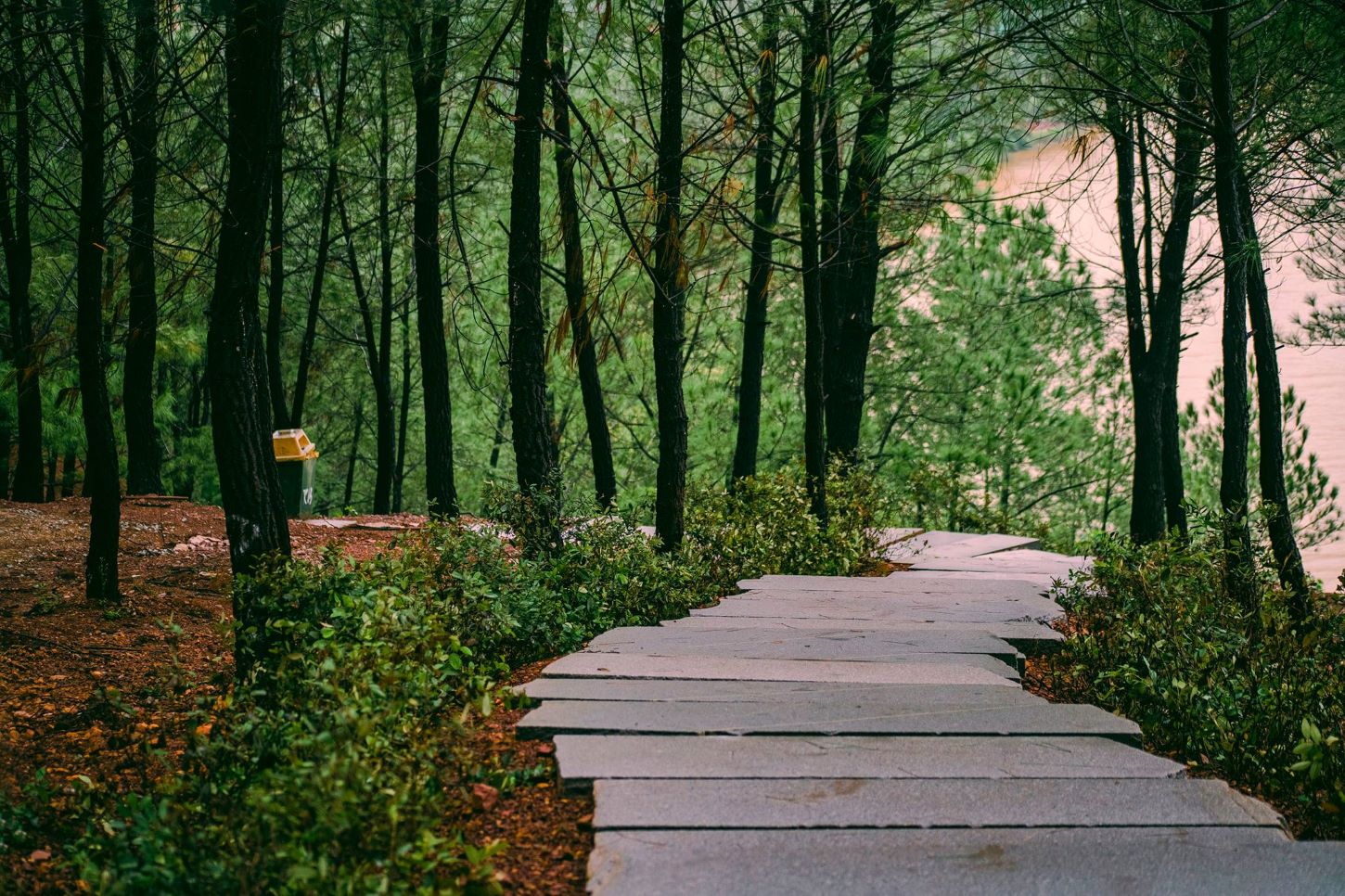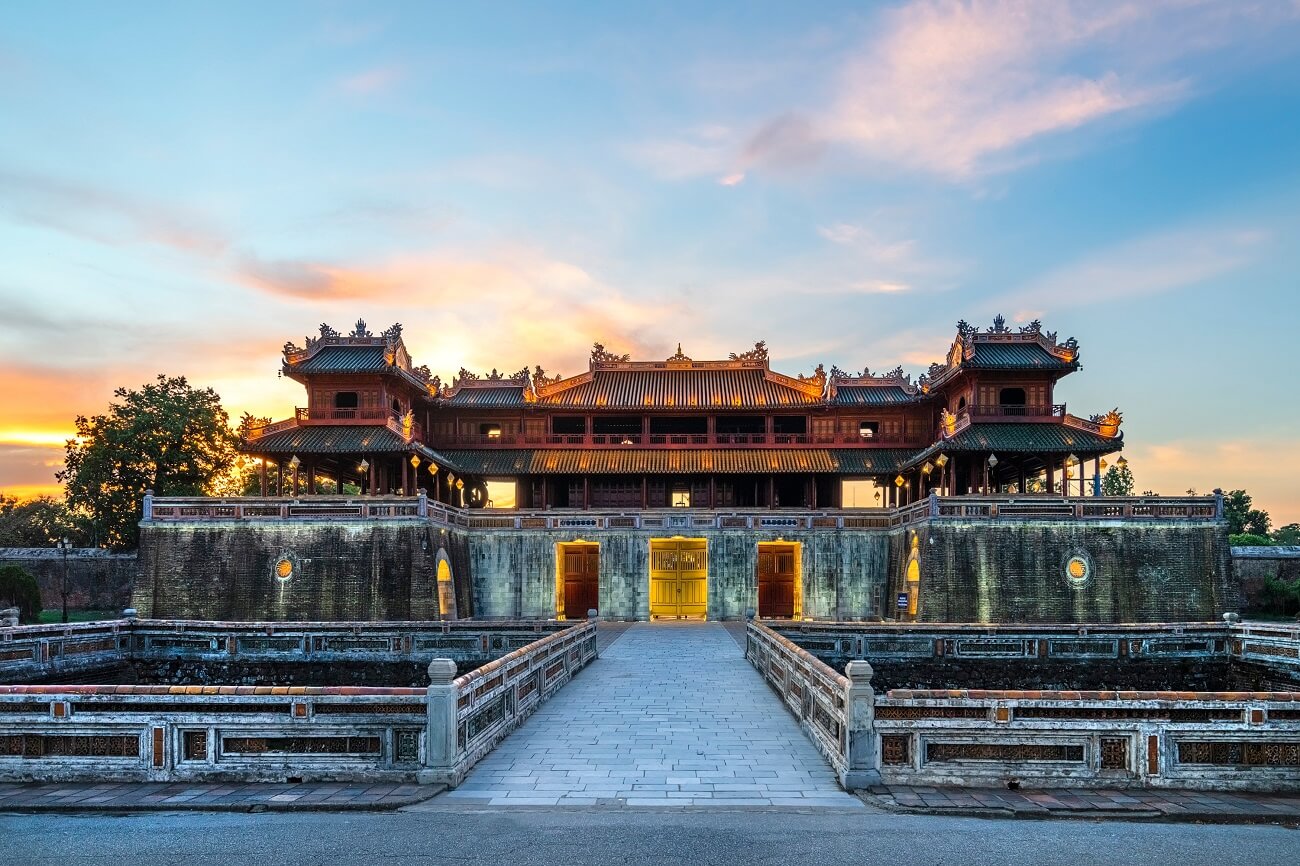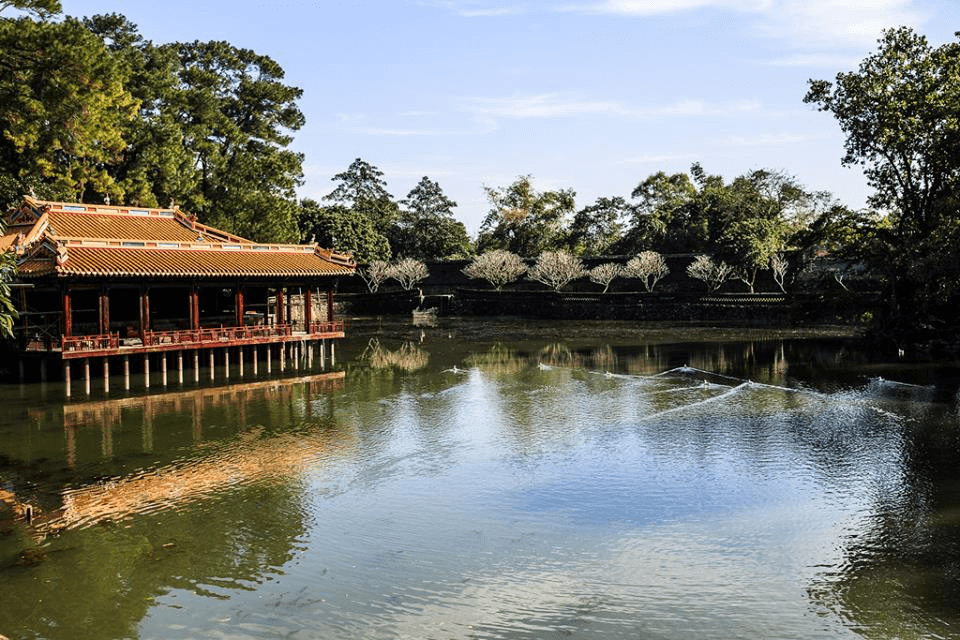From the majestic appearance of Gia Long Mausoleum to the poetic charm of Tu Duc Mausoleum and the extravagance of Khai Dinh Mausoleum, the tombs in Hue Not only a tourist destination, but also a journey to experience the essence of ancient royal culture.
Let's Queen Cafe Bus Travel in comfort and style to explore The 7 most beautiful tombs in the ancient capital, where the legacy of 13 Nguyen dynasty kings is preserved, along with detailed information about ticket prices for visiting tombs in Hue and suggested itinerary.
1. Overview of the mausoleum system in Hue
1.1. What are the Hue tombs?
The Hue Tombs are a complex of tombs for the emperors of the Nguyen dynasty, scattered across the southwest. Imperial City of Hue, and is an important part of The World Cultural Heritage Site recognized by UNESCO.
Beyond their significance as resting places, each structure is a unique architectural masterpiece, profoundly expressing the ideology, power, and worldview of the ruling monarch. Nestled within nature, each mausoleum tells a story about the philosophy of life and worldview of an era.

About historical valueThe Hue Mausoleum is a place that preserves the important traces of the Nguyen Dynasty—the last feudal dynasty of Vietnam—while clearly reflecting the country's transformation during the modern era.
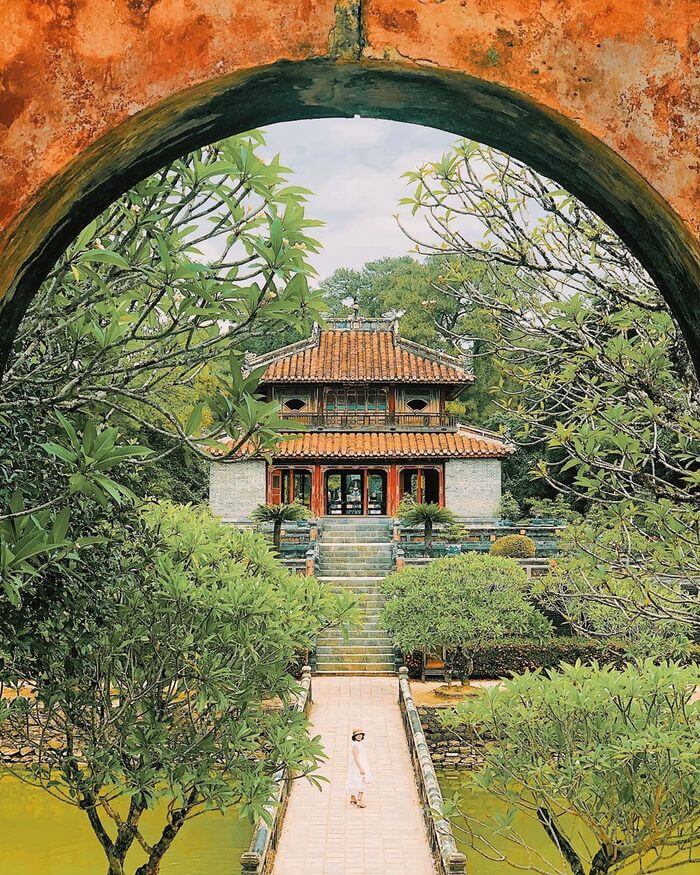
About cultureThe tombs are a harmonious blend of Confucian, Buddhist, and Taoist influences, reflected in their layout, feng shui elements, and distinctive sculptural artistry.
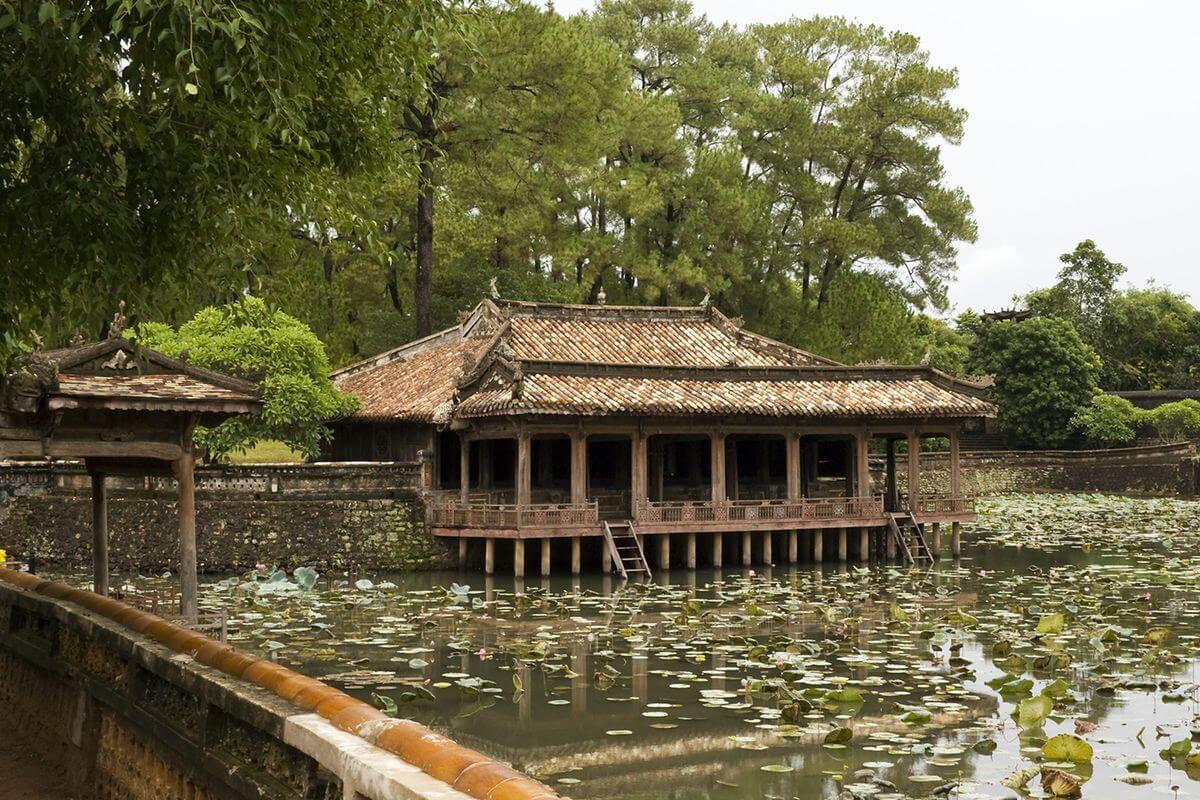
About architectureThis is evidence of the technical expertise and masterful craftsmanship of the Vietnamese people of old, who skillfully combined imperial architecture, natural landscapes, and traditional decorative arts to create structures that are both majestic and rich in poetic quality.
1.2. How many Nguyen kings' tombs are there in Hue?
The Nguyen Dynasty had 13 kings., but an interesting fact is that only 7 people with their own tombsThis number is not random; it conceals many stories about historical upheavals and the rise and fall of a dynasty.
1.2.1. The Nguyen Dynasty had 13 kings, but only 7 royal tombs were built.
During its 143-year reign (1802–1945), the Nguyen dynasty had 13 emperors, but today only Seven tombs were fully constructed and remain intact in Hue.Including: the tombs of Gia Long, Minh Mang, Thieu Tri, Tu Duc, Duc Duc, Dong Khanh, and Khai Dinh.
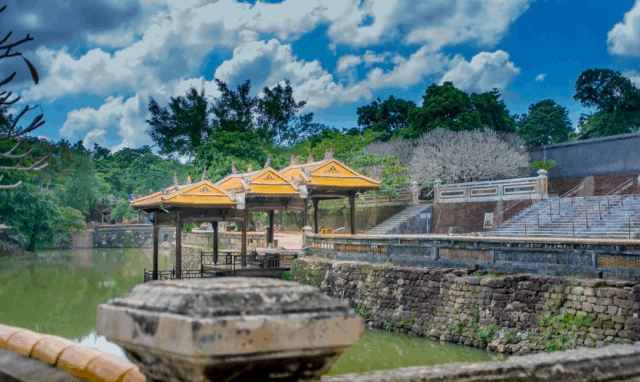
Each mausoleum embodies the unique personality and philosophy of life and death of the reigning monarch. The Gia Long Mausoleum—dedicated to the founder of the Nguyen dynasty—is situated in a vast, expansive space, blending seamlessly with the pristine natural surroundings, reflecting the stature of the empire's founder.
Minh Mang Tomb emulates an ideal world, with a symmetrical axis representing Confucianism and the spirit of governing the country and bringing peace to the people. Tu Duc Tomb is gentle and poetic, like a garden of poetry dedicated to the melancholic and sensitive poet-king.
Meanwhile, the Khai Dinh Mausoleum is a bold departure, notable for its East-West hybrid architecture, reflecting a modern outlook and strong royal personality at the beginning of the 20th century.
The common feature of these beautiful tombs in Hue is the meticulous investment, from their feng shui locations and construction materials to their decorative artistry. The tomb spaces are both sacred and places that demonstrate supreme power, while reflecting the architectural and craftsmanship skills that reached their peak during the Nguyen dynasty.
1.2.2. Explaining why not every king has a tomb.
The reason the remaining six kings did not have their own tombs was largely due to historical upheavals. Some kings had very short reigns, were deposed, or were exiled to distant lands, such as the patriotic kings. Ham Nghi, Thanh Thai, Duy Tan.
Moreover, after the Khải Định era, the power of the Nguyễn dynasty weakened, and the national treasury was depleted under French colonial rule, making it impossible to construct monumental structures such as tombs.
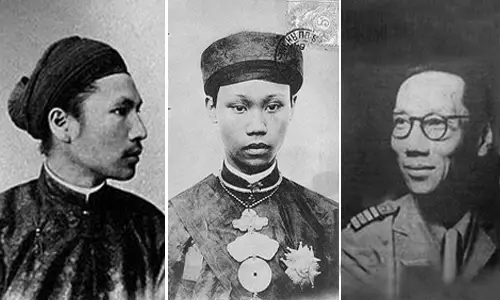
2. TOP 7 Must-See Mausoleums in Hue (2025)
From the solemnity of Gia Long Mausoleum to the extravagance of Khai Dinh Mausoleum, each structure on the list of tourist destination Hue Each one tells its own story of individuality and the mark of its era. Join Queen Cafe Bus to discover the TOP 7 most beautiful tombs in Hue and fully experience the magnificent and profound beauty of the ancient capital.
2.1. Minh Mang Mausoleum (Hieu Mausoleum) – A masterpiece of planning imbued with Confucian ideology
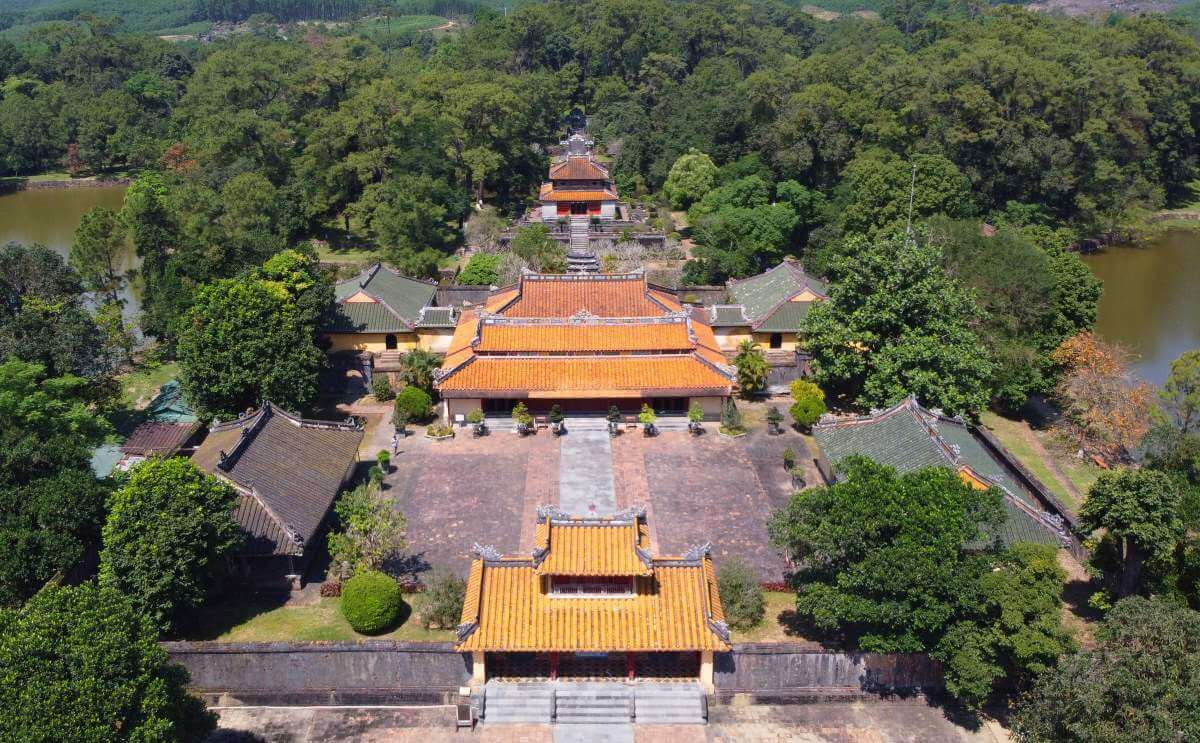
Located on the banks of the Huong River, about 12km from the center of Hue, Minh Mang Mausoleum is a classic model of Nguyen dynasty tomb architecture. The entire complex is planned along a single sacred axis, expressing absolute symmetry, majesty, and harmony between architecture and nature.
Highlights such as Trung Dao Bridge across Trừng Minh Lake, Minh Tower water reflection New Moon Lake The royal tombs exude Confucian philosophy and profound political thought.
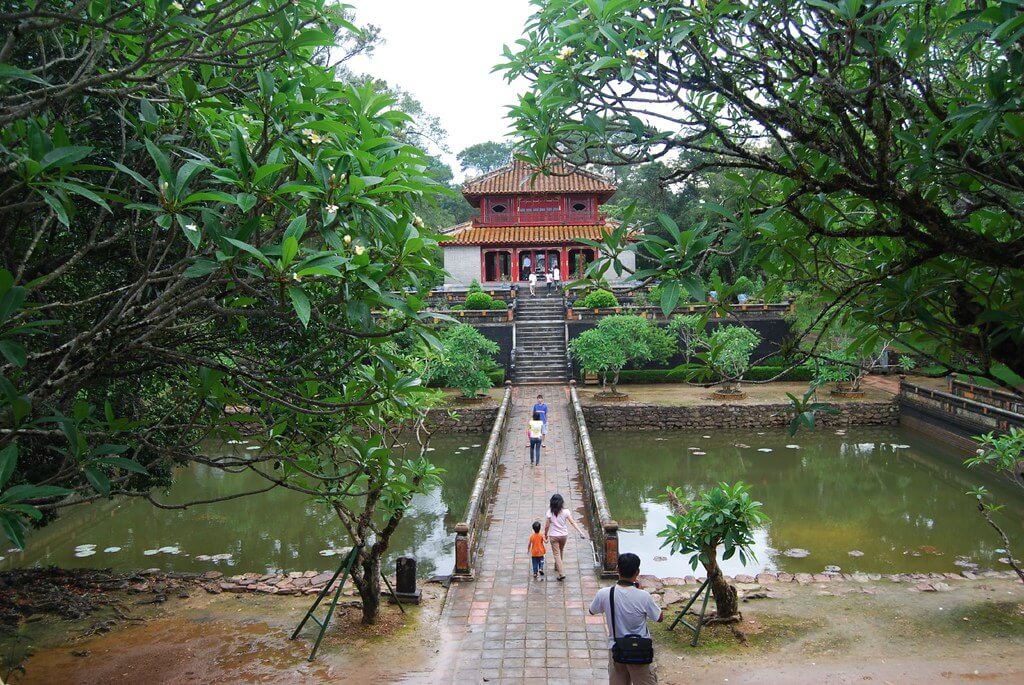
2.2. Tu Duc Tomb (Khiem Tomb) – The poetic garden of the poet king
Step into Tu Duc Mausoleum One feels as if they have wandered into a tranquil garden rather than a tomb. Nestled among the pine trees, Khiem Tomb embodies the artistic soul of the poet king.
The space here does not emphasize solemnity but rather a poetic, ethereal charm with Luu Khiem Lake and the water pavilion Xung Khiem Ta – where the king once sat reciting poetry and fishing. This is a place to slow down, to feel the harmony between humans and the universe.
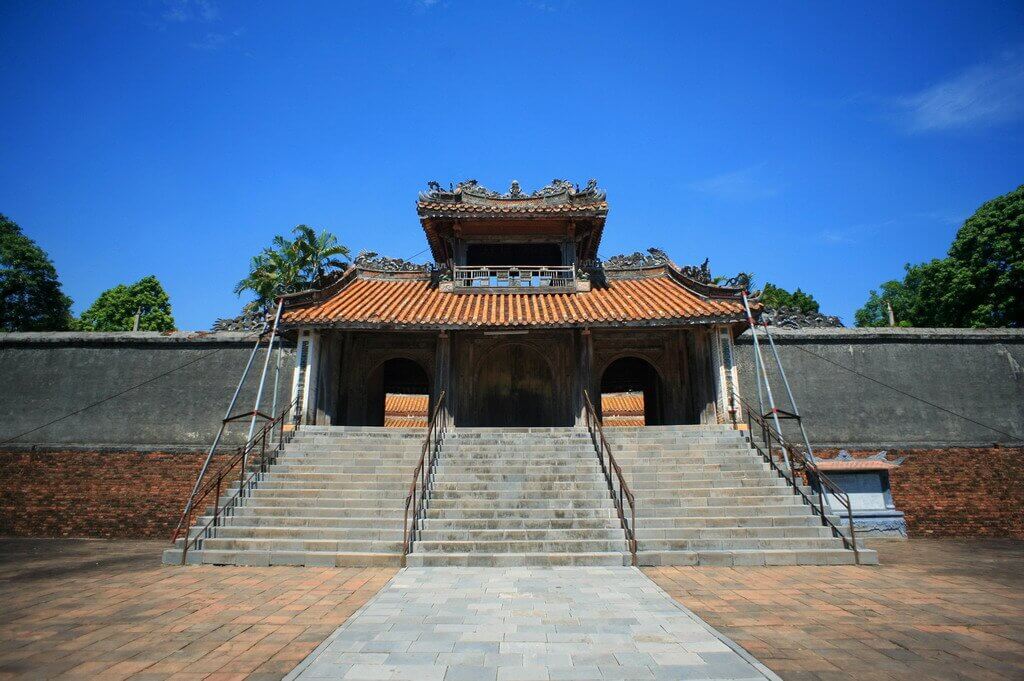
2.3. Khai Dinh Mausoleum (Ung Lăng) – The most extravagant work of Hue's mausoleum architecture
Unlike any other tomb, Khai Dinh Mausoleum is a unique symphony of Asian and European architecture. Located on the slopes of Chau Chu Mountain, the tomb stands out with 127 steps leading up to a magnificent palace. The most distinctive feature is the artistry. ceramic and colored glass mosaic exquisite interior design, especially inside Thien Dinh Palace.
Here, there is a gold-plated bronze statue of the king and the painting "Cửu Long Ẩn Vân" on the ceiling, creating an overwhelming artistic space that clearly expresses the personality and modern aesthetic taste of King Khải Định.
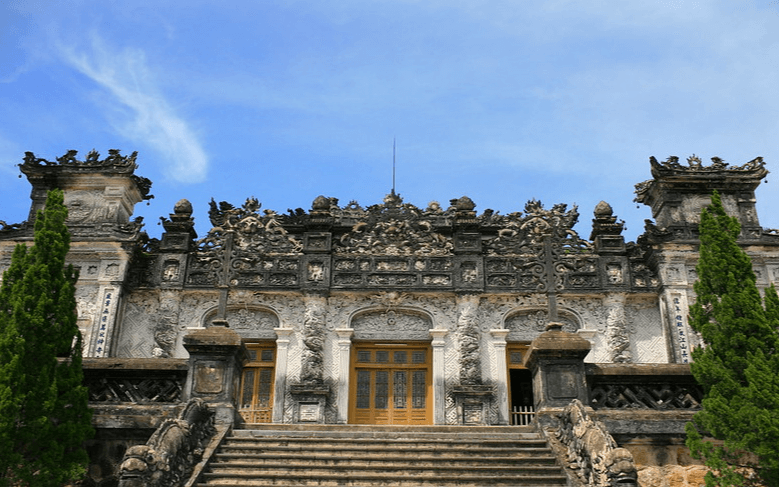
2.4. Gia Long Mausoleum (Thien Tho Mausoleum) – Eternal rest amidst pristine mountains and waters
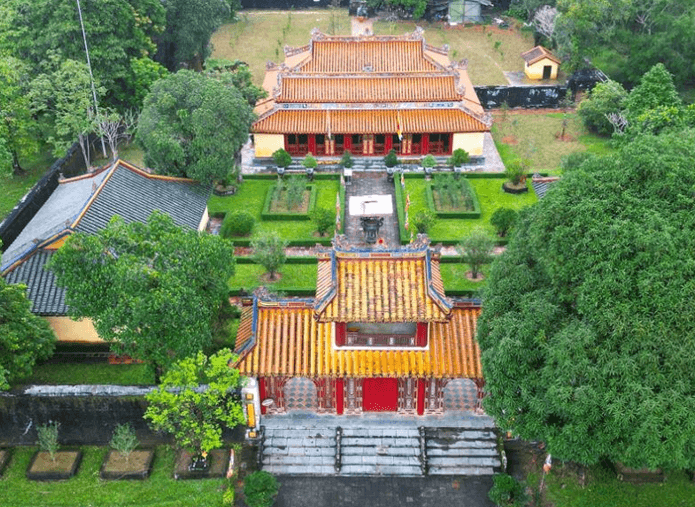
The starting point for the system Tomb of Hue, Gia Long Mausoleum It possesses a rustic, majestic beauty and blends completely with nature. Nestled among a region of rugged hills and mountains, the tomb exudes the dignity of the founding emperor without the need for elaborate decoration. Its distinctive feature is its simple, natural layout, serving as the shared resting place of Emperor Gia Long and Empress Thua Thien Cao, symbolizing their eternal bond.
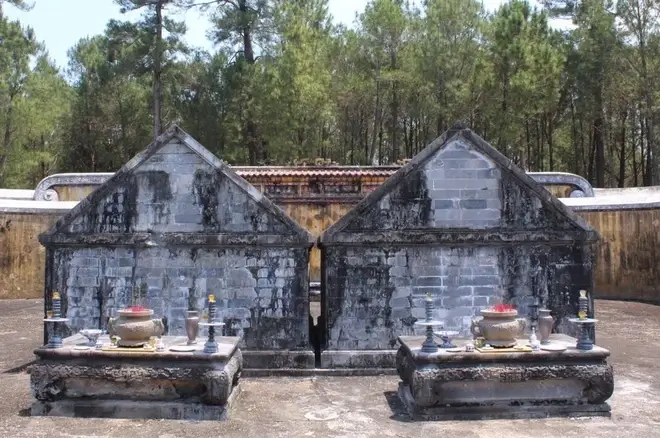
2.5. Thiệu Trị Mausoleum (Xương Lăng) – A modest heritage site with an elegant beauty
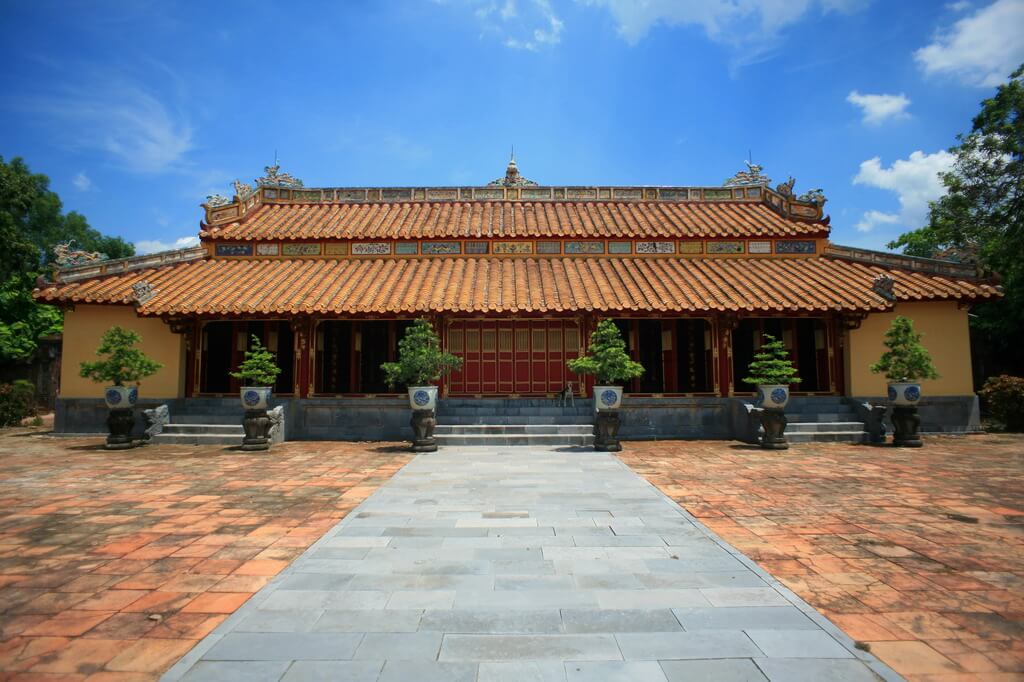
Thiệu Trị Mausoleum is a unique structure, built in the shortest time (just 10 months) and the only mausoleum not chosen by the emperor himself. Despite this, Xương Lăng still exudes an air of elegance, balance, and harmony. Nestled among rice fields and orchards, the mausoleum possesses a simple, humble beauty that accurately reflects the calm and refined character of King Thiệu Trị.
2.6. Dong Khanh Mausoleum (Tu Lăng) – Asian-European fusion in the heart of the ancient capital
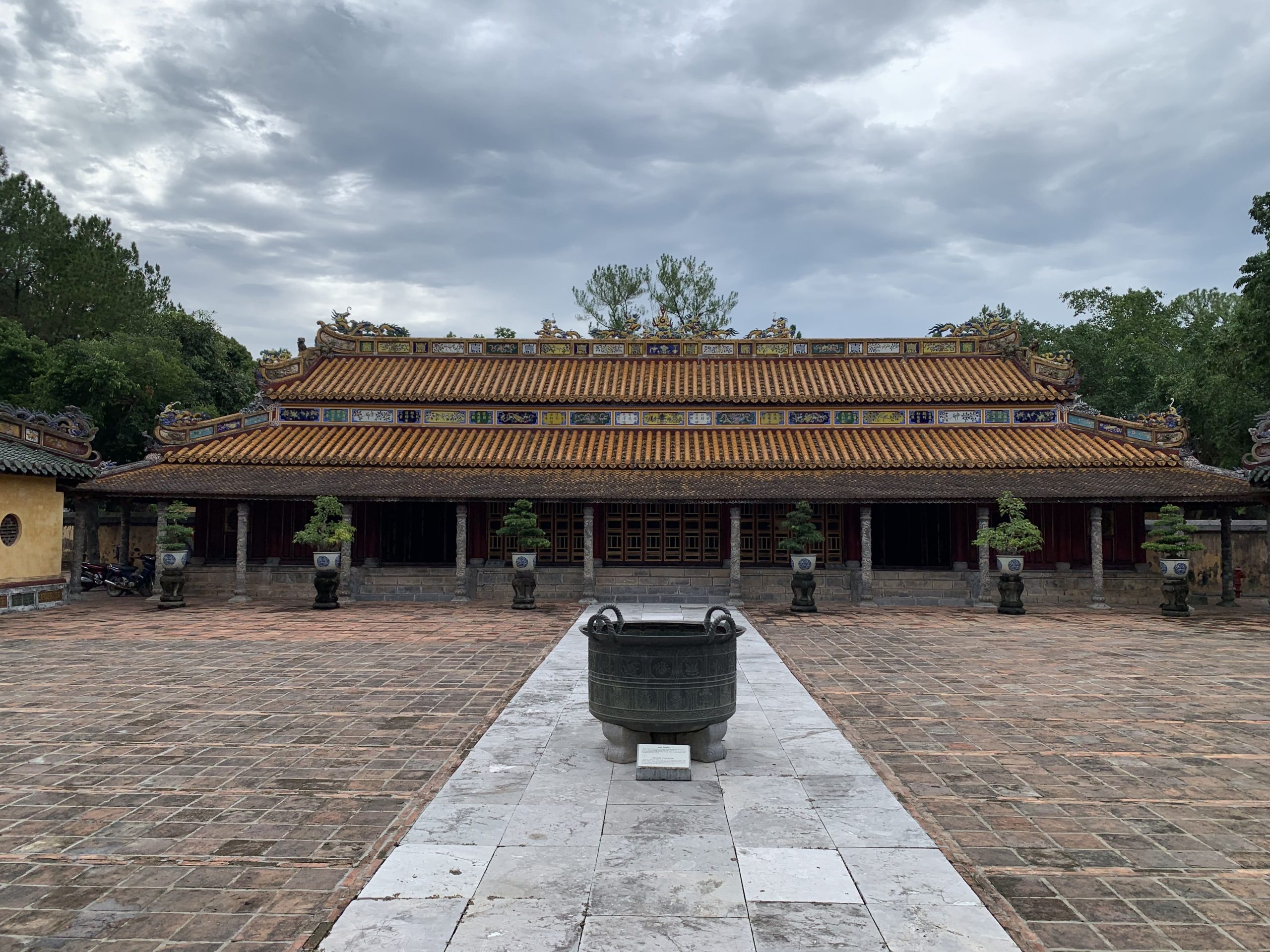
Dong Khanh Mausoleum (Tu Lăng) is an interesting testament to cultural exchange, where traditional Asian architecture began to blend with Western influences, particularly French style. Built over several reigns, the mausoleum bears the mark of many different styles.
Details such as colored glass doors, decorative tiles, and ornamental patterns signaled a shift in aesthetics, paving the way for the unique style of Khai Dinh Mausoleum later on.
2.7. Duc Duc Mausoleum (An Lang) – The simple tomb complex of three kings
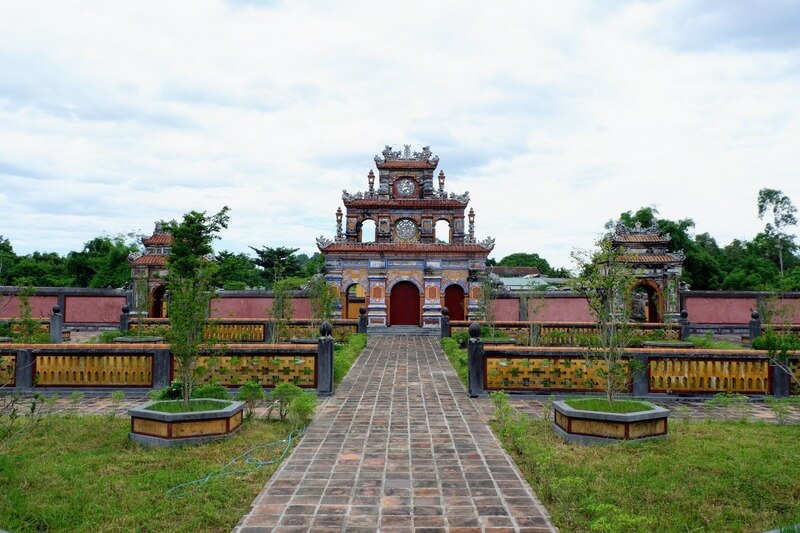
Not grand or ornate, An Lăng holds a special historical and emotional value. It is the final resting place of three kings who met tragic fates: Duc Duc, Thanh Thai, and Duy TanThe architecture of the mausoleum is very modest and simple, with almost no royal features, accurately reflecting the turbulent lives and tragic fates of the kings worshipped here. An Lăng is a quiet note, evoking many thoughts about a turbulent period of history.
3. Guidebook and tips for visiting Hue's tombs
Under the gentle golden sun and the rustling pine trees, exploring the tombs in Hue always leaves an unforgettable impression – both tranquil and profound. If you are looking for a reasonable, emotional, and time-saving itinerary, this guidebook on visiting the tombs in Hue will be your reliable companion.
3.1. Hue Mausoleum Admission Fees [Latest Update 2025]
3.1.1. Individual ticket prices for each Hue tomb
| The tombs | Adults (Vietnam & International) |
Children (7–12 years old) |
Children (under 6 years old) |
| Tu Duc Mausoleum | 150,000 VND | 30,000 VND | Free |
| Khai Dinh Mausoleum | 150,000 VND | 30,000 VND | Free |
| Gia Long Mausoleum | 150,000 VND | Free | Free |
| Dong Khanh Mausoleum | 100,000 VND | Free | Free |
| Duc Duc Mausoleum | 50,000 VND | Free | Free |
3.1.2. Combined ticket prices for Hue tombs by route to save costs.
| Tour route | Points include | Combo price (estimated) |
| 2 points | Minh Mang + Gia Long | ~240,000 VND per adult |
| 3 points – Classic | Gia Long + Minh Mang + Tu Duc | ~300,000 VND per adult |
| 3 points – Royal intersection | Khai Dinh + Minh Mang + Gia Long | ~350,000 VND per adult |
| 4 points – A panoramic view of the palace | Gia Long + Minh Mang + Tu Duc + Khai Dinh | ~$20 USD per adult |
| 4 points – East-West intersection | Tu Duc + Khai Dinh + Gia Long + Dong Khanh | ~400,000 VND per adult |
Reasons to buy the combo:
- Cost savings compared to buying individual tickets for each point.
- Convenient When scheduling, avoid confusion with each type of ticket.
- It is possible route options based on preferences: prefer royal architecture, or combine it with picturesque natural scenery.
3.1.3. Ticket price exemption/reduction policy for Hue tombs:
Ticket discount policy
The People's Committee of Hue City has the authority to flexibly adjust ticket prices at certain tourist attractions to stimulate domestic tourism. The discount may reach up to 35% depending on the time, location, and actual circumstances.
In addition, certain special groups are 50% discount on admission fees, including:
- Beneficiaries of cultural preferential policies under Decision 170/2003/QĐ-TTg.
- Persons with severe disabilities as defined in Decree 28/2012/NĐ-CP.
- Elderly persons aged 60 and above, according to Decree 06/2011/NĐ-CP.
- Residents living in Thua Thien Hue province.
- Students enrolled at universities, colleges, and vocational schools in Hue City.
- Press, media, or tourism survey groups that are officially registered with the Hue Monuments Conservation Center.
Free ticket policy
Vietnamese citizens are exempt from admission fees to Hue's historical sites during special occasions such as:
- Lunar New Year (three days off at the beginning of the lunar year).
- Thua Thien Hue Liberation Day (March 26) and Vietnam National Day (September 2).
In addition, the following groups are also fully exempt:
- Persons with severe disabilities.
- Children under 7 years old.
- High school students in the province go on field trips.
- Certain special cases will be considered individually.
Note: When visiting, bring your ID or relevant confirmation to ensure you receive the correct discount policy. If you need help planning a tour that combines multiple sites at a low cost, you can refer to the ticket options or ask directly at the ticket counter at the Hue Heritage Center.
3.2. Map of Hue Tombs

3.3. Travel to Hue and conveniently visit the royal tombs with Queen Cafe Bus
Departing from Hanoi, Da Nang, or Hoi An, Queen Cafe Bus is a convenient option worth considering to reach Hue with modern limousines and comfortable private cabins. The bus stops at 7 Doi Cung – the city center, near Trang Tien Bridge, helping you easily reach your hotel and start exploring. Below is a price list for some major routes for your reference:
| BUS ROUTE TO HUẾ | PRICE | BOOK TICKETS |
| Hanoi ⇔ Hue | $15.00 – $22.50 | Place it here |
| Da Nang ⇔ Hue | $150 | Place it here |
| Hoi An ⇔ Hue | $150 | Place it here |
| Ninh Binh ⇔ Hue | $150 - $200 | Place it here |
| Quang Binh ⇔ Hue | $180 | Place it here |
📞 For attentive consultation and the fastest ticket booking, you can contact:
- Hotline: 0906.413.468 – 0914.215.809
- Zalo: 0905.746.884 – 0914.215.809
- Website: https://queenbus.com.vn/
- Fanpage: Queen Cafe Open Bus
3.4. Suggested itinerary for visiting Hue tombs in one day
With just one day in Hue, you can still explore the most iconic tombs of the Nguyen dynasty if you plan your time wisely. The suggested itinerary below helps you optimize your time, combining architectural art, scenic beauty, and fascinating historical stories.
3.4.1. Route 1: Tu Duc Tomb – Dong Khanh Tomb – Khai Dinh Tomb.
Morning:
- 08:00 Departing from the center of Hue City.
- 8:30 AM – 10:00 AM Tu Duc Mausoleum (Khiem Mausoleum)
- Discover architecture such as the royal park, a poetic space with Luu Khiem Lake, Khiem Cung Gate, and Xung Khiem Pavilion.
- Enjoy coffee/light refreshments at small cafes near the mausoleum.
- 10:15 AM – 11:15 AM Dong Khanh Mausoleum (Tu Lăng)
- Located near Tu Duc Tomb, it is smaller in scale but stands out with its unique Asian-European architecture, clearly influenced by French culture.
At noon:
- 11:30 AM – 1:00 PM Rest and have lunch at a local restaurant (suggestion: eateries along the road to Khai Dinh, or return to the center and continue the afternoon journey).
Afternoon:
- 1:30 PM – 3:30 PM Khai Dinh Mausoleum (Ung Mausoleum)
- Be impressed by the 127 stone steps, the blend of Asian and European architecture, and the extremely sophisticated ceramic mosaic and enamel art at the Thien Dinh Palace.
With this itinerary, you will have a day of exploration that is just right—not too rushed, yet still allowing you to enjoy the architectural, scenic, and historical highlights of Hue's most beautiful tombs.
3.4.2. Route 2: Minh Mang Tomb – Gia Long Tomb.
Suggested one-day itinerary for visiting tombs along the Minh Mang Tomb – Gia Long Tomb route, for those who want to discover the ancient beauty, blending majestic architecture and tranquil nature of the ancient capital of Hue.
8:00 AM – Departure from Hue City Center
- Travel by car, motorcycle, or hire a taxi/tourist bus from the center to Minh Mang Mausoleum (~12km, approximately 25–30 minutes).
- Suggestion: If traveling in a group, you can rent a car package for greater convenience when combining both destinations.
8:30 AM – 10:00 AM: Visit Minh Mang Tomb (Hieu Tomb)
- Discover the standard symmetrical layout, deeply imbued with Confucian thought.
- Stop at Trung Dao Bridge, Minh Tower, and New Moon Lake – extremely beautiful photo spots.
- Listen to the story of the visionary king and the most significant architectural legacy of the Nguyen dynasty.
10:00 – 10:30: Travel to Gia Long Mausoleum
- The route is about 6 km long, passing through hilly areas with stunningly beautiful, unspoiled natural scenery.
10:30 AM – 12:00 PM: Explore Gia Long Mausoleum (Thien Tho Mausoleum)
- This is the first tomb of the Nguyen dynasty, notable for its open space and harmony with nature.
- Visit the architectural complex: the king's tomb – the queen's tomb – the court yard.
- Admire the simple yet majestic beauty, reflecting the philosophy of "heaven and earth in harmony."
12:00 PM – 1:00 PM: Lunch break & meal
- You can prepare snacks to bring along or return to the area near Minh Mang Tomb to have a meal.
- Some local restaurants near Cư Chánh village or Minh Mạng Street serve delicious, rustic Huế dishes.
1:30 PM – 2:00 PM: Return to the city center
- End your journey gently, perfect for travelers who love tranquility, history, and green spaces.
If traveling by Queen Cafe Bus When arriving in Hue from other provinces, you can rent a motorbike or taxi at the center (7 Doi Cung) for convenient exploration.
3.5. Important things to know when visiting Hue tombs
However, before embarking on your journey to explore the tombs in Hue, there are a few small but important points to keep in mind. From choosing the right attire to opening hours and general regulations, all of these will help you have a smoother and more fulfilling experience.
3.5.1. Clothing

When visiting Hue's tombs, choose modest, respectful attire to show reverence for these sacred sites. Lightweight, easy-to-move-in clothing such as long pants, short-sleeved shirts, or blouses are appropriate choices.
Avoid wearing short skirts, off-the-shoulder tops, or overly thin clothing. If you want beautiful photos, you can bring a long dress, a traditional Vietnamese blouse, or other traditional-style outfits – they flatter your figure and look great in the ancient setting of the tombs.
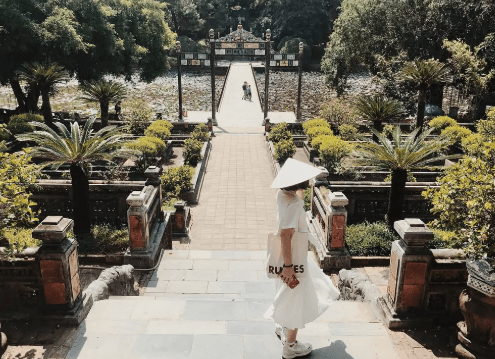
3.5.2. Visiting Hours for Hue Tombs
- Opening hours (applies to most tombs):
- Summer (from April 1 to September 30): 7:00 AM – 5:30 PM
- Winter (from October 1 to March 31): 7:00 AM – 5:00 PM
- The ideal time to visit each tomb:
- Khai Dinh Tomb: 1–1.5 hours (many steps, architecture worth careful observation)
- Tu Duc Tomb: 1.5–2 hours (spacious, park-like layout, many stops)
- Minh Mang Mausoleum: 1–1.5 hours (harmonious main and secondary axes, beautiful scenery)
- Other tombs (Thiệu Trị, Gia Long, Đồng Khánh, Dục Đức): approximately 45 minutes to 1 hour per tomb
3.5.3. Maintain general hygiene and respect the space of Hue's tombs
- Do not litter; use the designated areas.
- Do not write, draw, or carve on walls, stone monuments, or ancient artifacts.
- Refrain from touching the carved details and reliefs in the tomb.
- Maintain order, do not make loud noises, especially in the worship area.
- Do not climb walls, railings, or structures.
- Respect sacred spaces – behave appropriately and courteously.
- If traveling in a group or on a tour, follow the tour guide's instructions.
- Contribute to preserving heritage through civilized, conscious actions.
Frequently Asked Questions
For magnificence and intricate details: Khai Dinh Tomb is unmatched.
For poetic scenery and harmony with nature: Tu Duc Tomb is the most beloved.
For grandeur and architectural perfection: Minh Mang Tomb is a true masterpiece.
Gia Long Tomb (Thien Tho Tomb)
Minh Mang Tomb (Hieu Tomb)
Thieu Tri Tomb (Xuong Tomb)
Tu Duc Tomb (Khiem Tomb)
Duc Duc Tomb (An Tomb) – the resting place of three emperors: Duc Duc, Thanh Thai, and Duy Tan.
Dong Khanh Tomb (Tu Tomb)
Khai Dinh Tomb (Ung Tomb)


